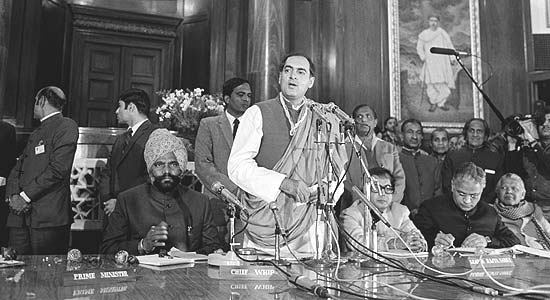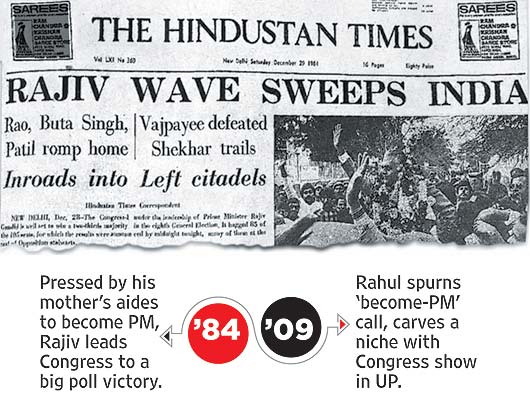Britain has a serious white problem on its hands
By Swapan Dasgupta
Nearly 25 years ago, I shared a pot of afternoon tea at a hotel in St. James’s with Enoch Powell, then on the margins of British politics as a Unionist member of parliament for the idyllic South Downs in Northern Ireland. It was a freewheeling conversation that touched, among other things, on his memories of wartime India, his obsession with the classics and the massacre of the English language by journalists. But the conversation inevitably veered to that infamous “Rivers of blood” speech of April 1968 which lost him his position in the Conservative Party and cast him as an untouchable.
Powell initially tried to make light of the fact that his allusion to the Sibyl’s prophecy of the “River Tiber foaming with much blood” had been completely misconstrued by hacks, presumably untutored in the classics: “Maybe I should have said it in Latin.” In a more serious vein, he lamented the breakdown of traditional communities and the disorientation of ordinary, decent people by widespread immigration into the United Kingdom. “Tell me,” he asked piercingly, “was it fair to either the Brummie or the Pathan? They are very different peoples; they have different cultures.”
Powell was not speaking from ignorance. He knew the English Midlands, having represented Wolverhampton, a town that grew out of the Industrial Revolution; he knew the “Pathan”, his shorthand for the Pakistani immigrants who had taken advantage of their Commonwealth status to work in the factories during the immediate post-war boom; he knew Urdu, having studied it during the war; and he had imbibed the romance and grandeur of India in a manner reminiscent of Lord Curzon and Rudyard Kipling. In an article in 1974, he had touchingly compared the relationship of Britain and India to a “shared hallucination”.
Ironically, on all the four counts invoked by Hain, the Cambridge-educated Griffin, who speaks with a pronounced non-U accent, deserved a hearing regardless of how repugnant his views were. Diversity, after all, cannot be confined to merely a celebration of cultures that originated outside the Sceptred Isle. Minority currents include the angry, under-achieving white working classes, particularly in the rust belts of northern England, which have provided sustenance to the BNP.
A Joseph Rowntree Foundation-sponsored research released earlier this month admitted that “traditional white, working-class communities have been left behind by the pace of social change in modern Britain”. In a construct reminiscent of the deprivation rhetoric hitherto reserved for vulnerable ethnic minorities, it argued that “the reduction in social housing, greater competition for jobs, unstable employment, and breakdown of traditional community bonds through institutions like trade unions and clubs and societies has [sic] turned what were some of the country’s strongest communities — celebrated in soaps like Coronation Street and EastEnders — into isolated, fractured groups, where perceptions of unfairness can drive people to take extremist views”. Educationally, says the report, children from poor, white working-class families are the worst under-achievers.
Pepper the narrative of the Rowntree report with declamations against a “sham” democracy and venal multinational corporations, and Arundhati Roy’s characteristically feisty understanding of Maoist extremism in India isn’t very dissimilar.
Britain has a serious white problem on its hands. Logically, there isn’t a direct correlation between immigration and the decline of manufacturing in northern England. If anything, cheap labour from the New Commonwealth helped sustain British competitiveness for longer than economics warranted. And in sectors such as coal mining, where communities preserved their ethnic compactness, the decline was linked to militant trades unionism rather than cheap, foreign labour.
The sense of white vulnerability, it would seem, is nominally economic. In the rust belt of the Midlands, the Pakistani and black communities aren’t comparatively better off — though the Asians have a better record of generating self-employment. A pre-existing cultural schism has been deepened by the feeling among whites that no one cares and that there are no serious attempts to either stop immigration from within the European Union or detect and deport illegal immigrants and spurious asylum seekers.
White rage has been fuelled by the antipathy to a liberal consensus that makes it illegitimate for the non-kosher side of the immigration debate to be heard. When marginalized white English folk read of Islamist outrages in Britain and encounter people who want to reproduce the culture of Waziristan, including the sharia law, in Lancashire, they are both bewildered and angry. This resentment has given the likes of the BNP the political opening to rail against the cosy consensus in Westminster.
Griffin is not Powell. His anti-immigration populism and his concern for British and Christian values conceal a warped mind. The BNP leader believes in eugenics, dotes on the Ku Klux Klan, comes close to questioning the Holocaust and has a taste for pseudo-history. He truly belongs to the fringe. Yet, the BNP polled nearly a million votes this year, much, much more than the charismatic Sir Oswald Mosley and the National Front could ever dream of. What made the difference is not the economic recession or even Britain’s visible descent into irrelevance. At the heart of the BNP surge is the despair over the collapse of a way of life and visceral rage against a cosmopolitanism that happened too fast and without sensitivity.
History will record whether the BNP is actually a threat to the British consensus or just a freak storm. For the moment, what strikes an outsider is the iniquity of suppressing a rounded debate on immigration and multiculturalism. Ethnocentric views of national identity cannot be silenced by legislation or, worse, drowned in a sea of condescension. Had Powell not been edged out of the mainstream after 1968, English nationalism wouldn’t have turned so nasty.


